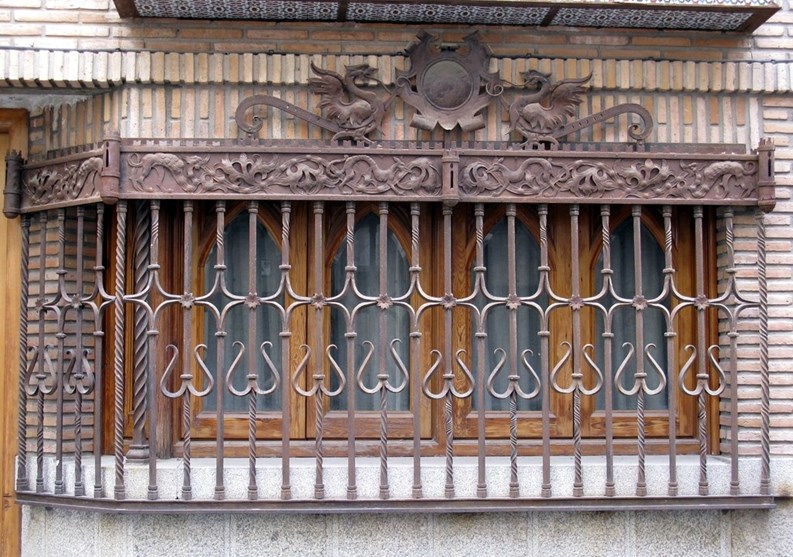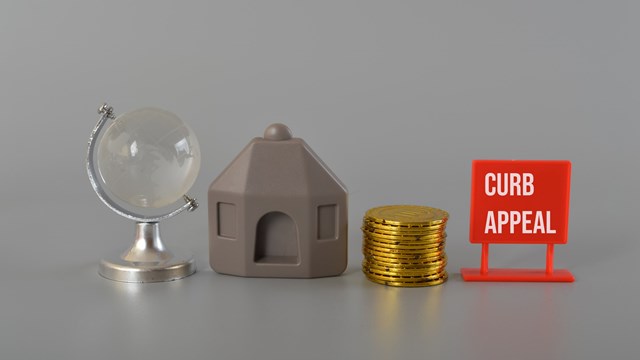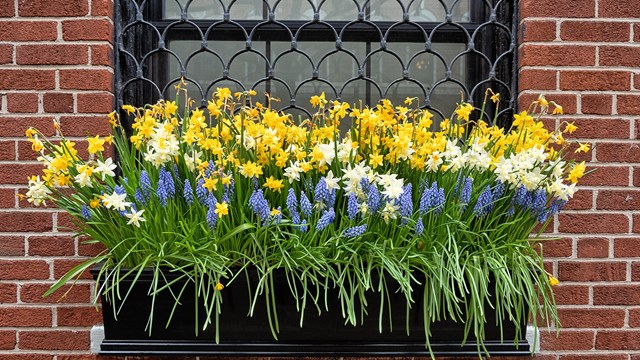Many suburban homeowners have dreams of that legendary white picket fence, but those who live in the city can also definitely appreciate the importance of demarcating their property. Many condos and co-ops around the five boroughs have fencing installed around their property, whether for security reasons or just as a nice aesthetic touch to make the building stand out amidst a busy sidewalk.
Unlike the wood and vinyl of suburbia, in New York City co-op and condo buildings of a certain vintage, proper, fencing often means metal—predominantly iron, but also steel, aluminum, and other alloys. Wood and vinyl are generally found further out in the boroughs.
“There’s no one-option-fits-all approach; it’s just a matter of what people want from an enclosure,” says Michael Costanza, president of Olympic Fence in Richmond Hill. “All buildings have their own opinion—it could be based on the architectural design, what’s easiest to maintain, or just the price.”
Larry Kaufman, owner of J. Kaufman Iron Works in the Bronx, which has been serving New York customers for more than 100 years, says that New York-area condos and co-ops generally look to add fencing that is easy to maintain—and that's mostly wrought iron and aluminum.
“We do everything that needs to be done to service the co-op and condo market and work with building managers and owners,” he says. “We can add a moat to the front of a building, add some child gates and provide unique options for them. Fencing is important. It can keep people out of certain areas of the building, protect the back of the building, and it makes people feel more secure.”
What’s Available?
Wrought iron is the material of choice for most New Yorkers as it provides an upscale look at a relatively small price. Over the last decade or two, aluminum has been finding its way to more of the Big Apple’s condos, even though it’s more expensive, because it’s basically maintenance-free. Having said that, Vance Hill, owner of Gun Hill Fence in the Bronx, says that although metal fencing is most popular in the city, there are other options.
“We do have more of a demand for the iron and steel fencing but there are certain areas of the city where other fencing may be more desirable,” he says. “Once someone puts up a fence, it’s a good bet it’s not going anywhere for a long time, so people should weigh their options before making a choice.”
According to industry experts, here are the basic types of fencing that is available for those in New York City.
Chain Link: One of the most cost-effective and durable materials, chain link is very good for security and requires very little maintenance—though one major drawback is that it doesn’t offer the aesthetics of other, more ornate options. Also referred to as wire netting, chain-wire fence, or diamond-mesh fence, this type of fence is recognized by its characteristic diamond shape created by the wire being hooked together in a zigzag fashion. Hill says that chain link fences aren’t too popular among the condo boards for street-side use, but they are sometimes used in other capacities in less visible parts of the building, such as rear courtyards or alley passages.
Vinyl:Gaining in popularity over the years because of decreasing prices and more aesthetically pleasing options, new condos are often turning to vinyl. This type of fence is made of synthetic materials and has proven to be capable of standing up to the tough winters that we have faced over the last few years. According to Costanza, vinyl fences are available in different heights, styles and patterns, and gates can be custom made to fit a variety of designs.
Iron & Steel:If you’re looking for durability and strong security, Hill says these fences are tough to beat. Because of its susceptibility to rust, iron fencing is somewhat less durable than steel, and requires more frequent maintenance and repairs. On the other hand, iron is more resistant to shocks and vibrations, and breaks down more gradually than steel. In areas with high traffic that may result in your fence being struck by a vehicle or other object, iron should be your go-to choice. When iron is met with force, it will bend, but ultimately stand. Steel does not bend and will just break in two— though it requires much more force to cause any damage. Both types of fence can last a lifetime if properly cleaned once a year.
Aluminum:Even though it’s not as strong as iron or steel, this fencing option is probably the best when it comes to handling bad weather and the elements. As noted above, aluminum fencing requires next to nothing when it comes to maintenance. It's also very light, making it extremely easy to install in areas that you may have difficulty installing iron or steel fencing.
Wood:Even though it’s one of the most popular fencing materials in the country, you won’t see many wood fences in New York City. Wood fences can be the most beautiful for a condo but also the most difficult to maintain. Common wood fences are made from cypress, Western red cedar, and treated pine.
According to fencing professionals, more than any other factor, the price tag for any sort of fencing is determined by the cost of the material. Chain-link is cheaper than wood, which is cheaper than vinyl, which is usually cheaper than ornamental metals.
Maintenance Matters
Walk around the streets of nearly any neighborhood in the city, and you will see a number of fences and gates that look rundown and rusty. For the most part, this damage could have been avoided with some care and foresight. Kaufman says a savvy condo or co-op board will have a plan in place to keep their fences looking sharp at all times.
“With raw iron, when it’s outside, it’s going to rust over time, but you can prolong the life by many, many years,” he says. “If you continually maintain it as an annual or even biannual maintenance item, it can outlast the building. But once it starts rusting, it starts to become a problem.”
Kaufman says that one simple solution for maintenance is to wire brush any rust off the iron surface, and add a coat of black paint. Typically, these fences can handle layer upon layer of paint as the years go by.
The majority of vinyl fences can be cleaned very easily by just spraying the fence down with a water hose. Tougher stains may require some strong elbow grease with soap and water—or a good blast with a power washer—but it’s something that doesn’t need to be done too often.
Wood fences can suffer from mold, mildew and discoloration. Wood fences should be cleaned at least twice a year, and should be treated with an outdoor wood sealer that includes a water repellant and ultraviolet stabilizer to prevent sun damage. With all fences, the pros say that the thing that should be monitored most for wear and tear are the posts and gates, since they are the only parts that move. Even with that, however, there isn't much of a need to walk the fence line on a regular basis.
As a rule, once the fencing is properly installed, the fencing company's role is over—they don’t usually offer any ongoing maintenance programs after installation, although a warranty on labor is standard and many of the products are guaranteed by the manufacturer as well. This makes it even more important for buildings to properly inspect and maintain their fencing as the seasons change.
By the Code
Surprisingly, when a condo or co-op wants to put up a new fence, there aren’t the usual hoops to go through that many other projects require. Most fences in New York City are under six feet tall but sometimes a building may wish to go higher for privacy or security reasons.
According to the Department of Buildings (DOB), there are no regulations in place that requires building owners to hire an architect or engineer, provide design plans or have a work permit for fence installations that are less than six-feet high. However, a permit is required for the building or installation of fences over six feet high on any property—but they are relatively easy to obtain. DOB code generally allows for a maximum fence height of 10 feet, and the New York City zoning resolutions outline additional height limits based on location.
Up on the Roof
Fences in New York aren’t limited to just what’s around the front and back of the building. Many buildings have fences installed on their roofs and some condos have them in areas where they may have a pool.
Costanza says that oftentimes fences are added to roofs for protection—especially if the roof is home to a playground, garden or other rooftop attraction. In these cases, his firm usually employs a chain-link fence, or sometimes a PVC vinyl option for more privacy.
With a pool area, the fence of choice is usually a gated iron or steel fence, something that is strong and requires little effort to maintain.
Whether a building has a fence or not may not seem like that big a deal at first, but when you consider the security it can provide, the privacy it offers and the beauty that certain fences can add, fencing is becoming an amenity that is more important than ever to today’s shareholders and unit owners.
Keith Loria is a freelance writer and frequent contributor to The Cooperator.







Leave a Comment